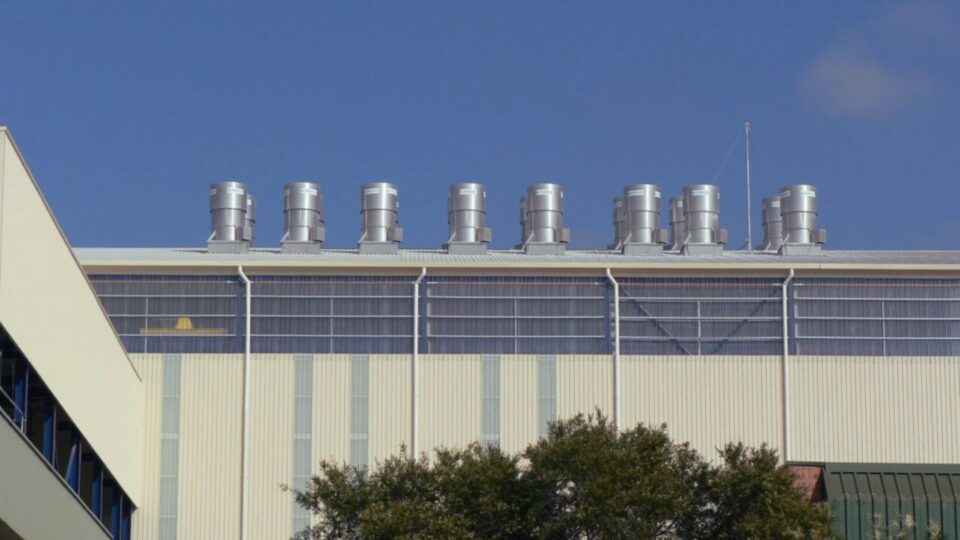Between 2011 and 2020, 1451 Australians died from exposure to air dust. 90% of these deaths were men. 80% of these deaths were caused by pneumoconiosis from exposure to asbestos and other minerals in the air.
What risks are posed by poor air quality, and what can be done to protect industrial workers?
Keep reading as we discuss why industrial air quality is an important consideration for businesses, along with the air quality regulations for different industries and how to uphold them.
What is air quality?
Air quality is a term that describes how polluted the air we breathe is. If the air quality is poor, hazardous pollutants in the air may be quite dangerous for those with cardiovascular or respiratory conditions.
Clean air is a standard requirement for the workplace, allowing you to breathe freely and comfortably – without any odours or discomfort.
Why does industrial air quality matter?
To help you understand why air quality in industry matters, let’s discuss some of the consequences of pollutants.
Compromised product quality
In manufacturing environments, poor air quality can compromise product quality. For instance, if you are manufacturing food products, there could be contaminants and allergens in the air, which would compromise the quality of the product and lead to potential product recalls and customer safety concerns.
Combustion and explosions
In industries like mining, contaminants in the air can easily combust with ignition, leading to explosions. To ensure this does not risk worker safety, you should invest in ventilation solutions that regulate air quality and prevent combustion.
Respiratory and cardiovascular illness
Prolonged exposure to poor-quality air can lead to various respiratory and cardiovascular illnesses. Here are some of the diseases caused by exposure to poor-quality air:
- Stroke
- Chronic obstructive pulmonary disease
- Trachea, bronchus, and lung cancers
- Aggravated asthma
- Lower respiratory infections
- Silicosis
You could be liable if your workers suffer from one of these illnesses due to poor ventilation. You must provide proper ventilation and air exchange to protect your workers and prevent them from developing health conditions.
Air quality regulations
The air quality requirements in Australia dictate that a certain amount of ventilation is required to ensure a steady air exchange rate and reduce pollutants in the air.
There are different air exchange rate requirements across various industries. Here are some examples of ventilation requirements in various industry sectors to give you an idea of your obligations:
- Offices are required to provide an air exchange rate of at least 10 litres per person per second.
- Retail spaces must provide an air exchange rate of at least 15 litres per person per second.
- Industrial warehousing facilities should have an air exchange rate of between 6 and 30 litres per person per second.
- Food processing facilities should have an exchange rate of between 20 and 25 litres per person per second.
With industrial air quality monitoring solutions, you can identify the level of contaminants in the air at your facility and plan your ventilation strategy accordingly. By adhering to these standards, you can meet your workers’ needs and reduce the potential for occupational lung disease.
How to ensure air quality in industrial settings
Ventilation should be your key focus to provide better air quality in your industrial facility. Below are some of the best ventilation solutions for industrial settings.
Centrifugal Fans
A Centrifugal Fan extracts pollutants or contaminants in the air using a system of ducts or tubes. They provide high-pressure air flow to provide cooling and air exchange for industrial spaces. This type of fan is used in industries like agriculture and manufacturing due to its reliability, low noise, and adaptability.
Axial Flow Fans
Axial Fans are named after the direction in which they generate airflow – sideways. Their design is similar to a windmill, with rotating blades to draw in air parallel to the axis and force air out in the same direction. An axial flow fan helps to move large volumes of air efficiently. They are ideal for use in manufacturing, mining, and laundry industries, as they provide both extraction and cooling for equipment to prevent overheating.
Vat Purging Fans
This extraction fan helps to manage odours produced in vat processes such as winemaking or refineries. They provide extraction for any toxic, harmful, or odorous fumes caused by vat processes. It’s portable design lets you move the Purging Fan between vats for optimal convenience.
Vertical Discharge Roof Fans
A Vertical Discharge Roof Fan is ideal for any industry sector, providing an upwards airflow to remove stale air pockets and ensure steady air exchange rates. They incorporate curved impellers with three-dimensional profiled blades for high-volume airflow and extraction, ensuring an endless supply of clean and fresh air while providing temperature regulation.
Choose Fanquip for industrial ventilation solutions
If you are performing business operations in an industrial facility, you must know the industry-specific ventilation requirements to adhere to. Investing in ventilation solutions can reduce odours and pollutants in the air, providing a safe and comfortable working environment for your employees.
If you need to understand your ventilation requirements, you can count on the team of experts at Fanquip. We will assess your facility’s size and industry sector to recommend the ideal ventilation strategy. Contact us today to begin planning your ventilation system.
